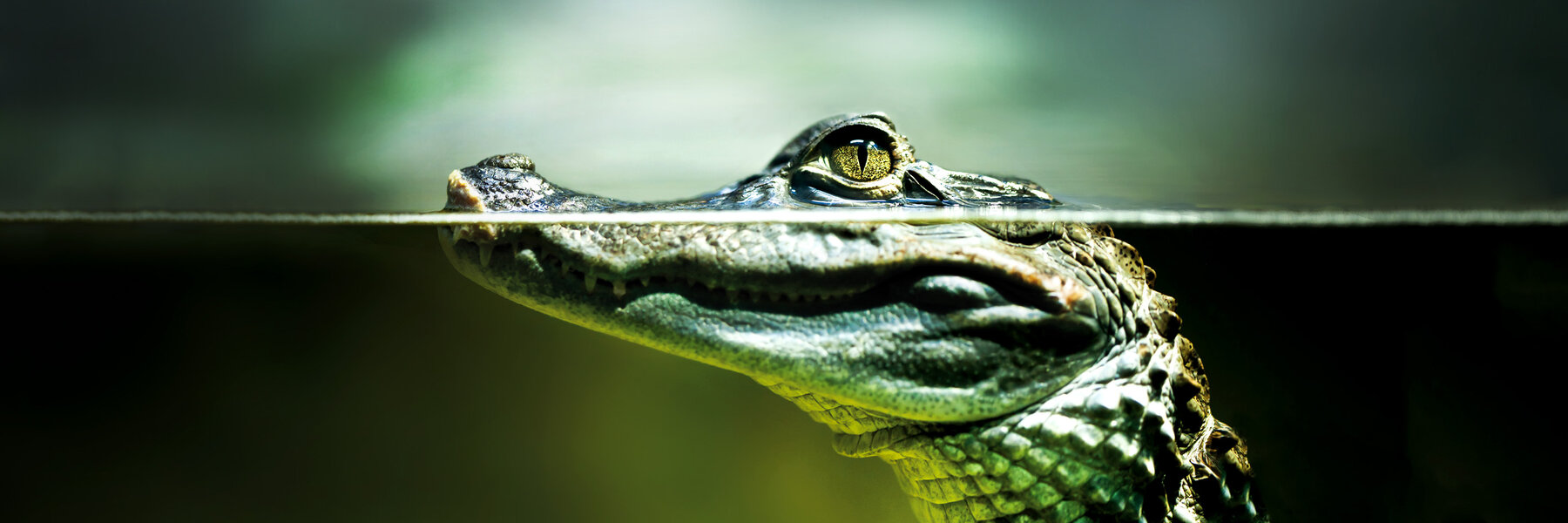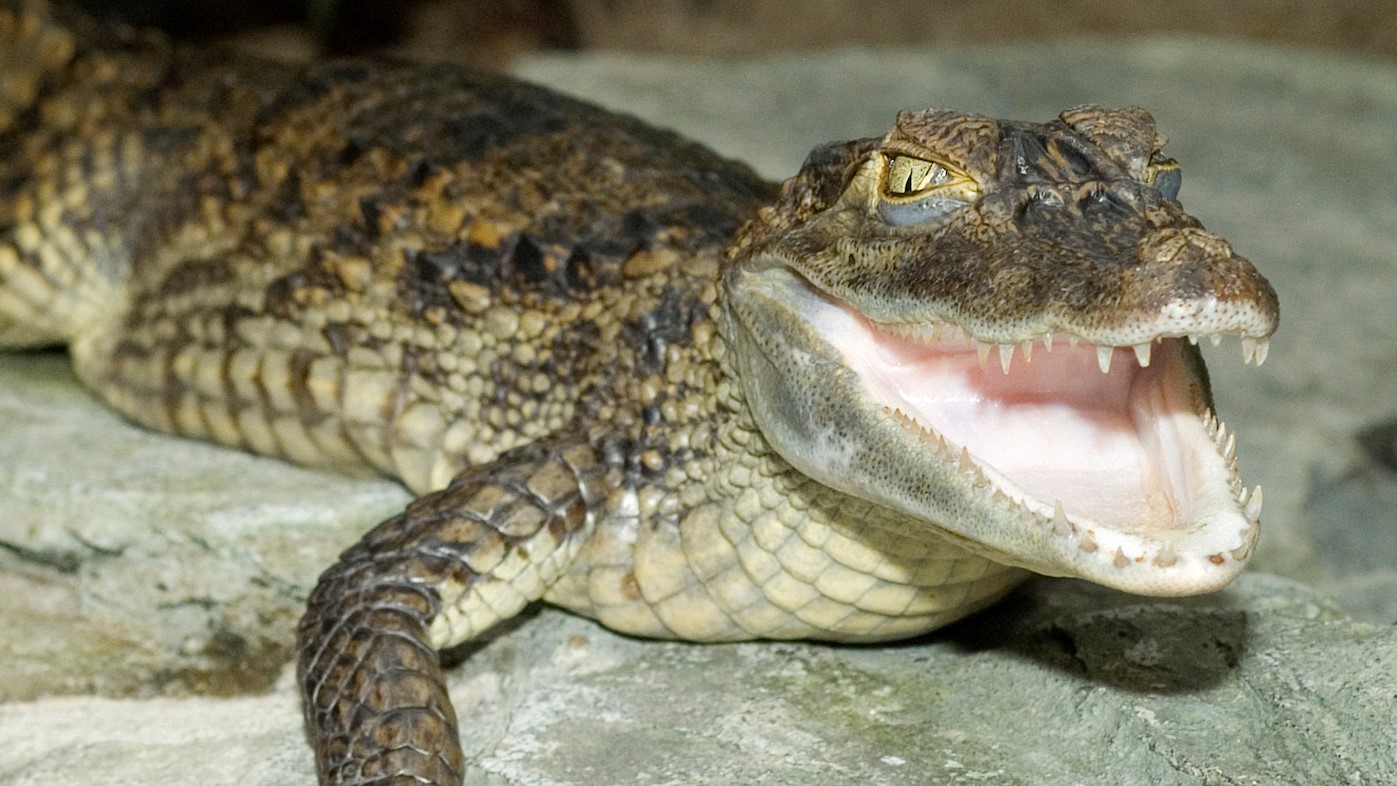
Spectacled caimans
Caiman crocodilus
What you should know about spectacled caimans
The various sub-species of caimans are common in many parts of Central and South America. Their habitat is bordered to the north by Mexico and to the south by northern Argentina. All subspecies of the spectacled caiman are threatened in their existence. This is due to illegal hunting for the leather trade. In the meantime, however, the animals have come under the protection of the International Washington Agreement. A particularly striking feature of the spectacled caiman is its bony ridge between the eyes, giving the impression of spectacles – hence the name 'spectacled caiman'. It belongs to the genus of 'true caimans' as part of the family of alligators and is generally considered as fairly combative and aggressive among its peers.
Characteristics
- Origin
Northern South America, Central America, southern Mexico
- Habitat
Lakes, rivers, swamps, reservoirs
- Diet
Mammals, birds, reptiles, amphibians, fish, mollusks, mussels
- Status
least concern
- Size
approx. 1.70 to 2.70 m, on average only 2 m
- Weight
approx. 30 kg
- Breeding period
approx. 3 months
- Achievable age
approx. 60 years
Threat Categories of IUCN


What actually distinguishes crocodiles from caimans?
One difference is, for example, the projecting fourth tooth when the snout of the crocodile is closed. This isn't the case with caimans. Incidentally, the spectacled caimans are able to easily change their colour: when they are relaxed, their skin turns darker, and it turns a lighter shade during stressful situations. Caimans can also remain submerged for over an hour and even longer in exceptions! Crocodiles can only do so for half an hour however.
Flexible omnivores
The adult caiman can pretty much eat anything that it can overpower when it comes to their diet – from insects, mussels, crabs, water snails or fish to birds, they go for those creatures who can't escape fast enough. The young feed predominantly on insects, molluscs and crustaceans, they also even eat smaller fish now and then.
Hands off the brood!
Spectacled caimans prefer tropical and subtropical waters. They can be found especially in slowly flowing waters with muddy conditions and strong vegetation. This is the ideal setting for the female to lay the approx. 30 eggs in the mound nest consisting of mud and plants. During the approx. three-month brooding time, she guards her nest and defends it strongly against enemies.
Is it true, that …?
... Spectacled caiman females also watch over the brood of other mothers? It's a fact. The otherwise fairly aggressive species shows a big heart and true nanny qualities when it comes to protecting the offspring. Mothers not only take care of their own offspring, but they also protect the young of other mothers from predators – this behaviour is absolutely essential for survival for the still tiny baby crocodile.

